package pl.mkaras.utils;
import android.content.Context;
import android.support.design.widget.AppBarLayout;
import android.support.design.widget.CoordinatorLayout;
import android.support.v4.view.ViewCompat;
import android.support.v7.widget.Toolbar;
import android.util.AttributeSet;
import android.view.View;
import android.view.ViewGroup;
import java.util.List;
public class ScrollViewBehaviorFix extends AppBarLayout.ScrollingViewBehavior {
public ScrollViewBehaviorFix() {
super();
}
public ScrollViewBehaviorFix(Context context, AttributeSet attrs) {
super(context, attrs);
}
public boolean onMeasureChild(CoordinatorLayout parent, View child, int parentWidthMeasureSpec, int widthUsed, int parentHeightMeasureSpec,
int heightUsed) {
if (child.getLayoutParams().height == -1) {
List<View> dependencies = parent.getDependencies(child);
if (dependencies.isEmpty()) {
return false;
}
final AppBarLayout appBar = findFirstAppBarLayout(dependencies);
if (appBar != null && ViewCompat.isLaidOut(appBar)) {
int availableHeight = View.MeasureSpec.getSize(parentHeightMeasureSpec);
if (availableHeight == 0) {
availableHeight = parent.getHeight();
}
final int height = availableHeight - appBar.getMeasuredHeight();
int heightMeasureSpec = View.MeasureSpec.makeMeasureSpec(height, View.MeasureSpec.AT_MOST);
parent.onMeasureChild(child, parentWidthMeasureSpec, widthUsed, heightMeasureSpec, heightUsed);
int childContentHeight = getContentHeight(child);
if (childContentHeight <= height) {
updateToolbar(parent, appBar, parentWidthMeasureSpec, widthUsed, parentHeightMeasureSpec, heightUsed, false);
heightMeasureSpec = View.MeasureSpec.makeMeasureSpec(height, View.MeasureSpec.EXACTLY);
parent.onMeasureChild(child, parentWidthMeasureSpec, widthUsed, heightMeasureSpec, heightUsed);
return true;
} else {
updateToolbar(parent, appBar, parentWidthMeasureSpec, widthUsed, parentHeightMeasureSpec, heightUsed, true);
return super.onMeasureChild(parent, child, parentWidthMeasureSpec, widthUsed, parentHeightMeasureSpec, heightUsed);
}
}
}
return false;
}
private static int getContentHeight(View view) {
if (view instanceof ViewGroup) {
ViewGroup viewGroup = (ViewGroup) view;
int contentHeight = 0;
for (int index = 0; index < viewGroup.getChildCount(); ++index) {
View child = viewGroup.getChildAt(index);
contentHeight += child.getMeasuredHeight();
}
return contentHeight;
} else {
return view.getMeasuredHeight();
}
}
private static AppBarLayout findFirstAppBarLayout(List<View> views) {
int i = 0;
for (int z = views.size(); i < z; ++i) {
View view = views.get(i);
if (view instanceof AppBarLayout) {
return (AppBarLayout) view;
}
}
throw new IllegalArgumentException("Missing AppBarLayout in CoordinatorLayout dependencies");
}
private void updateToolbar(CoordinatorLayout parent, AppBarLayout appBar, int parentWidthMeasureSpec, int widthUsed, int parentHeightMeasureSpec,
int heightUsed, boolean toggle) {
toggleToolbarScroll(appBar, toggle);
appBar.forceLayout();
parent.onMeasureChild(appBar, parentWidthMeasureSpec, widthUsed, parentHeightMeasureSpec, heightUsed);
}
private void toggleToolbarScroll(AppBarLayout appBar, boolean toggle) {
for (int index = 0; index < appBar.getChildCount(); ++index) {
View child = appBar.getChildAt(index);
if (child instanceof Toolbar) {
Toolbar toolbar = (Toolbar) child;
AppBarLayout.LayoutParams params = (AppBarLayout.LayoutParams) toolbar.getLayoutParams();
int scrollFlags = params.getScrollFlags();
if (toggle) {
scrollFlags |= AppBarLayout.LayoutParams.SCROLL_FLAG_SCROLL;
} else {
scrollFlags &= ~AppBarLayout.LayoutParams.SCROLL_FLAG_SCROLL;
}
params.setScrollFlags(scrollFlags);
}
}
}
}
This behavior basically removes scroll flag SCROLL from AppBarLayout, when scrolling content in dependent view (RecyclerView, NestedScrollView) is less than view height, ie. when scrolling is not needed. It also overrides offsetting scrolling view, which is normally done by AppBarLayout.ScrollingViewBehavior. Works well when adding footer, ie. button, to scrolling view or in ViewPager, where content length may be different in each page.

